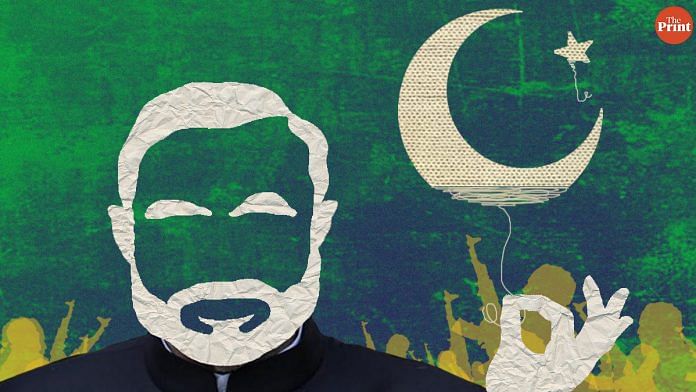Pakistan’s growing desperation
The timing of this renewed violence in Kashmir is no coincidence. It aligns with an intensifying political storm inside Pakistan—a nation now lurching from one crisis to another, governed by a fragile civilian dispensation kept afloat by the military establishment.
The irreversible erosion of democratic legitimacy has led to increased authoritarian tendencies and an even greater concentration of power in Rawalpindi’s hands. This internal malaise is compounded by a deteriorating economic landscape, characterised by unsustainable debt burdens, persistent inflationary pressures, and a dependence on external financial lifelines, including the IMF and strategic patrons like Saudi Arabia, the United Arab Emirates, and China.
Meanwhile, the resurgence of extremist violence within its own borders—embodied in the growing audacity of the Tehrik-e-Taliban Pakistan (TTP) and the intensifying Baloch insurgency—exposes the fraying threads of the state’s internal cohesion.
As General Asim Munir steers Pakistan’s military through tempests of domestic disarray and international uncertainty, the resurrection of Kashmir as the nation’s “” is no idle incantation. Rather, it is a deliberate act of political theatre—an old refrain revived to fortify a faltering creed and divert the attention of a populace increasingly estranged from a discredited governing elite.
Here, Kashmir is not merely a cause, but a lever of power: wielded to unify fractured loyalties at home and reignite global attention abroad. This enduring tactic, unchanged by time and undiluted by failure, reveals a deeper malaise within Pakistan’s strategic psyche—a reliance on myth to mask paralysis, on symbolism to camouflage decay. In this, one sees not strength, but desperation: the last refuge of a command structure increasingly adrift from both its people and its own sense of purpose.
This desperation became starkly visible during US Vice President JD Vance’s visit to India last week. Coming just as Washington reaffirmed its strategic alignment with New Delhi, the sickening terror attack appeared as a pointed reminder from Islamabad that the Kashmir issue is far from resolved, even if its visibility on the global stage has faded.
India, for its part, has responded with both urgency and assertion. By suspending the Indus Waters Treaty—long held as a rare example of cooperation amid enmity—New Delhi has signalled a recalibration of its red lines.
Beyond conventional retaliatory measures such as surgical strikes, another option being suggested this time is targeted assassinations—especially of high-value individuals within Pakistan’s military and militant networks such as Lashkar-e-Taiba and Jaish-e-Mohammed. Such operations are now feasible due to advancements in surveillance and strike capabilities. They can be executed with surgical precision and minimal physical presence, making attribution difficult and amplifying their strategic impact.
However, aggressive strategies carry inherent risks.
Regardless of the precise contours Indian military action may assume, a retaliatory response from Pakistan appears virtually inevitable, just as it did in 2019. The historical record, from the Kargil conflict of 1999 to the surgical strikes of 2016 and the Balakot airstrikes of 2019, underscores a sobering reality: strategic escalation in South Asia resists linear progression and often defies rational anticipation. The downing of an Indian MiG-21 by the Pakistan Air Force in 2019 marked a critical inflection point that heightened the spectre of a broader military conflict. India’s implicit threat of missile retaliation compelled urgent diplomatic intervention by the Trump administration, revealing the extent to which regional crises can rapidly entangle global powers. President Trump’s impromptu proposal to mediate the Kashmir dispute—though ultimately unrealised—nonetheless epitomised the often opportunistic engagement of Western actors in the subcontinent’s enduring strategic rivalry.
While the Western inclination for direct intervention has diminished, it has not vanished entirely. More significantly, its retreat has been matched, and in some ways overtaken, by the steady rise of Chinese assertiveness. After India’s constitutional reordering of Jammu and Kashmir in 2019, Beijing promptly moved to internationalise the matter by raising it at the UN Security Council. By 2020, it went further, attempting to reshape the Line of Actual Control in Ladakh by force.
This evolution in China’s posture is not incidental; it reflects its broader strategic ambition and its role as Pakistan’s principal patron. In this context, Pakistani Defence Minister Khawaja Asif’s for Russia, China, and even Western powers to investigate the Pahalgam massacre is neither novel nor surprising. It is a familiar manoeuvre, deeply rooted in Pakistan’s longstanding effort to draw global powers into the Kashmir dispute. As Beijing manages its own shifting equations with Washington, strained by Trump’s tariff wars and the broader decoupling of the global order, its calculus on South Asia is likely to be shaped by strategic opportunity.
Pakistan’s recent convening of its National Security Committee signals not just a readiness but an eager anticipation of an Indian response—be it a calibrated manoeuvre or a full-throttle offensive. The aggressive rhetoric emanating from both Rawalpindi and Islamabad, including declaring water diversion an “act of war”, rings hollow when juxtaposed with the absence of a proximate threat.
For India, a tottering Pakistani polity, a distracted West, and Arab acquiescence together create a seeming permissiveness for punitive action, couched in the language of self-defence. Yet this narrative ignores the asymmetries of the battlefield. The Indian military has nonetheless absorbed lessons from the Russian quagmire in Ukraine. War, if it comes, may escalate with logic all its own, unmoored from rational aims. A military blow may grant political respite, but it risks inviting strategic peril.
The choreography of escalation
India faces a complex strategic conundrum—caught between the imperatives of resolute action and the perils of unbridled escalation. The challenge lies not merely in retaliating against terrorism with calibrated force, but in mastering the choreography of escalation itself: to strike with purpose, yet to halt with precision.
The efficacy of New Delhi’s response will rest upon a triad of imperatives—first, the systematic dismantling of cross-border terror infrastructures; second, the adroit harnessing of global sympathy to forestall diplomatic backlash; and third, the strategic exploitation of the deep fissures within the Pakistani polity, whose contradictions render it vulnerable to internal disarray. In this shadowed theatre of subcontinental power, the art of war must be tempered by the craft of diplomacy.
India’s challenge lies not merely in the application of force, but in the subtle calculus of power and principle. What is needed is a reaction dramatic enough to make an immediate psychological impression, yet substantial enough to begin addressing the underlying problems involved. Deterrence must be credible, but never blind to the shifting alignments that, quietly and persistently, reshape the strategic architecture of South Asia.
(Edited by Asavari Singh)








